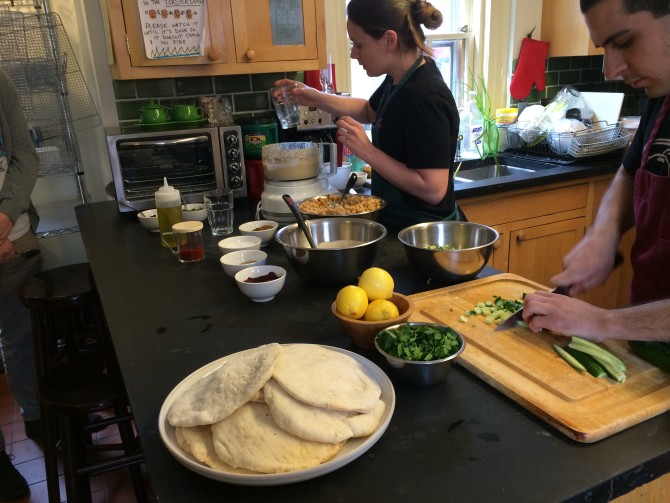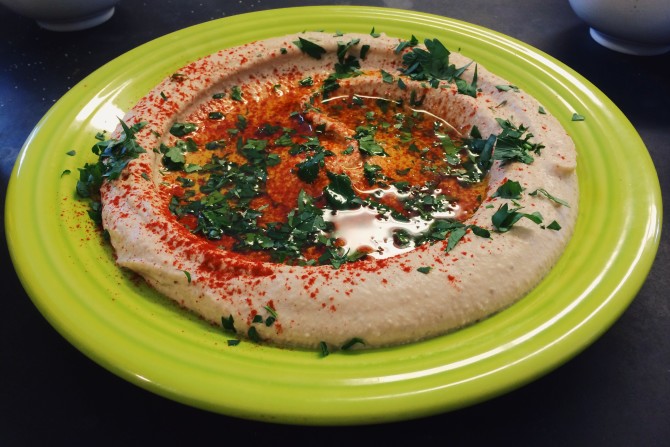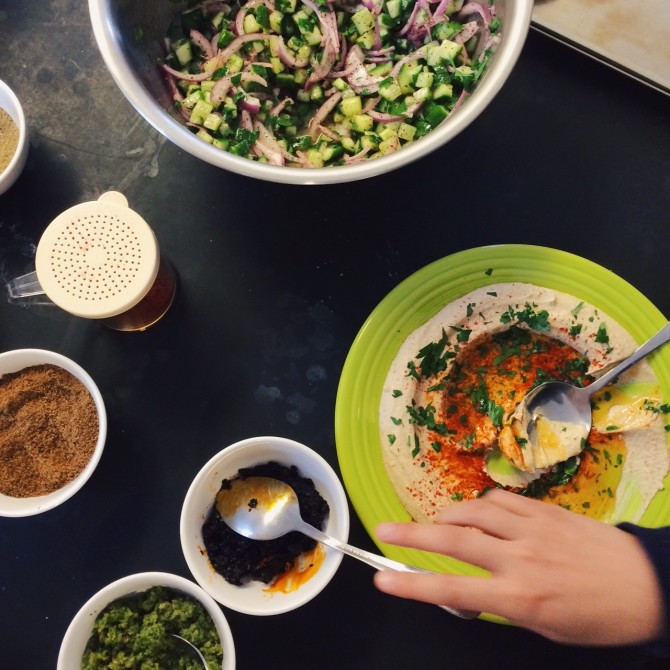As any of my close friends know, I have a thing for chef/restauranteur Michael Solomonov‘s recent creation: Dizengoff. That “thing” borders on being an obsession. Believe me, if you’ve been, you would understand. If you haven’t, you should drop everything and go…or find it on Caviar and order it in. When a friend told me there was going to be a Penn preceptorial featuring a chef from Dizengoff, I knew I had to go. Luckily I did, and it was by far the best class I will ever take at Penn. For those of you who missed it, here’s what happened:

Photo by Dina Zaret
We were lucky enough to have not just Elaine from Dizengoff, but also Bo from Zahav. Zahav is Solomonov’s Israeli restaurant in Old City and is consistently rated one of the best places in Philly. Dizengoff is it’s more affordable, single-product younger sibling. It only serves hummus along with toppings, and the choices change every day (check their Instagram for a daily update).
To make the hummus:

Photo by Dina Zaret
1. Cook canned chickpeas with a lil baking soda for about an hour until they’re almost mushy. While that’s cooking, make the tahina mix.
2. Add lemon juice and a few cloves of garlic to a blender and blend until you can no longer see many chunks of garlic. Strain out the garlic.
3. Put raw tahini into a blender (they recommend a version from the the local brand, Soom). Add the lemon/garlic mix a little at a time to taste and until the mixture gets fluffy. Blend for only about a minute. (Tip: you might need some cold water to get it to be creamy). Scoop out the tahina mix from the blender and put it into a bowl.
4. Put 2 cups of chickpeas for every 1 cup of tahina into the blender. Sprinkle in a good amount of kosher salt and freshly ground cumin. Add a little water if it looks too thick for your liking.
5. Scoop out your hummus, put it in a big bowl and use a spoon to make a swirl. Liberally add olive oil (they prefer Lebanese), paprika and zaatar. They also use a spice called harif, which is made from chilies, burnt onions, salt and lemon juice.
To eat the hummus:

Photo by Dina Zaret
Pita and/or Israeli salad are hummus’s best friends. To make Israeli salad start by chopping up onions and letting them pickle quickly with salt and some vinegar. Prepare the rest by chopping up cucumbers, tomatoes or whatever else is in season. Mix them with the onions and add olive oil (duh), and you’re good to go!
If you want to know what it’s actually supposed to taste like head over to Diz at 17th and Sansom until 7pm every day. My fellow members of the tribe take note: they’re serving homemade matzah this week!

